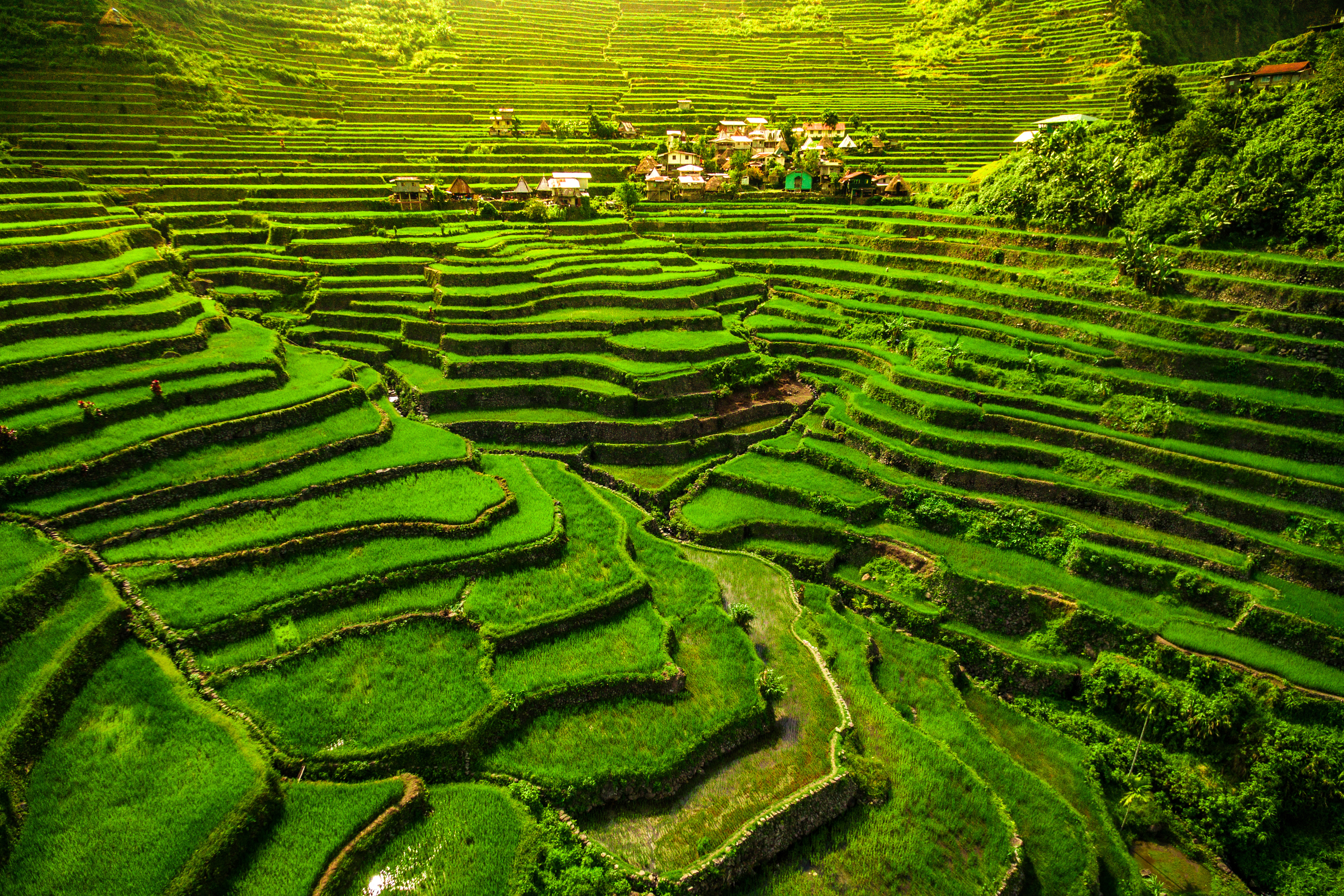Ifugao are an Indigenous (native) people of the Philippines . The Ifugao live in the mountainous Cordillera region of the island of Luzon . They are known for their rice-growing terraces, which help them farm the rugged terrain. The Ifugao are divided into groups based on culture and language. The groups include the Ayangan, Henanga, and Tuwali. Each group has distinct practices and beliefs.
Rice terraces are a central feature of traditional Ifugao life. The hand-built terraces form a sophisticated irrigation system, channeling water to grow rice on mountain slopes. The most extensive terraces are preserved as part of Banaue Rice Terraces, a UNESCO World Heritage Site. Other important crops grown by the Ifugao include beans, sweet potatoes, and taro. 
Important Ifugao crafts include woodcarving and basket weaving. The Ifugao also weave textiles in distinctive patterns of black, white, and red. Oral storytelling is an important tradition among the Ifugao, including an epic chant known as the Hudhud.
Beginning in the 1500’s, much of the Philippines was colonized by Spain. The Ifugao and other peoples of the Cordillera region resisted Spanish influence through a combination of armed resistance, agricultural technology, and the rugged terrain. The United States took possession of the Philippines following the Spanish-American War (1898), and Americans made extensive contact with the Ifugao. Many Ifugao now live a modern, Westernized lifestyle. However, modern Ifugao groups are working to maintain traditional crafts and other customs.
